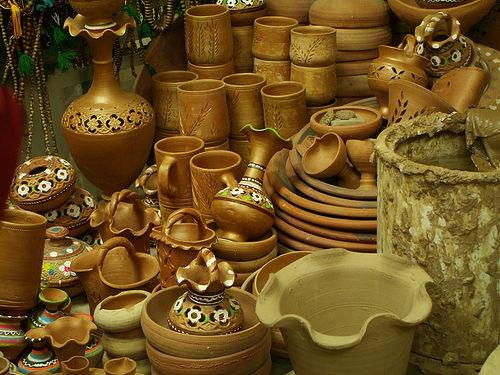
Punjab, often referred to as the “Land of Five Rivers,” is a historically rich and culturally vibrant region in the northwestern part of the Indian subcontinent. The name Punjab originates from the Persian words “Panj” (five) and “Ab” (water), referring to the five rivers—Beas, Ravi, Sutlej, Chenab, and Jhelum—that flow through the region. Today, Punjab is divided between India and Pakistan due to the partition of 1947. The Indian state of Punjab shares borders with Haryana, Himachal Pradesh, Jammu & Kashmir, Rajasthan, and the international border with Pakistan.
Punjab is known for its agricultural prosperity, rich cultural heritage, vibrant folk traditions, and significant historical and religious sites. It has played a crucial role in shaping India’s history, especially in the freedom struggle and economic development.
Historical Facts About Punjab
Ancient Period
- Indus Valley Civilization (c. 3300–1300 BCE)
- Punjab was home to one of the world’s oldest urban civilizations, the Indus Valley Civilization. Major sites like Harappa and Rakhigarhi highlight its advanced urban planning, drainage systems, and trade networks.
- Vedic Period (c. 1500–500 BCE)
- Punjab was an important region in the early Vedic civilization, referred to as Sapta Sindhu (land of seven rivers) in ancient texts. It was the site where the Rigveda, the oldest known Indian scripture, was composed.
- Maurya Empire (321–185 BCE)
- Punjab came under the rule of Chandragupta Maurya, and his grandson Ashoka spread Buddhism in the region.
- Indo-Greek and Kushan Rule (2nd century BCE–3rd century CE)
- The famous Indo-Greek King Menander (Milinda) ruled Punjab and later converted to Buddhism. The Kushans under Kanishka also patronized Buddhist art and culture.
Medieval Period
- Gupta Empire and Rajput Rule (4th–12th century CE)
- The Gupta dynasty had influence over parts of Punjab. Later, the Rajputs ruled some regions before the Muslim invasions.
- Islamic Invasions and Delhi Sultanate (11th–16th century CE)
- Punjab witnessed multiple invasions by Mahmud of Ghazni, Muhammad Ghori, and other rulers. It became a part of the Delhi Sultanate under rulers like Qutb-ud-din Aibak and Alauddin Khilji.
- Mughal Rule (16th–18th century CE)
- The Mughals, particularly Akbar, brought relative stability to Punjab. However, Aurangzeb’s policies led to unrest, especially among the Sikhs.
Sikh Empire and Colonial Era
- Rise of Sikhism (15th century onward)
- Guru Nanak Dev Ji (1469–1539) founded Sikhism in Punjab. The ten Sikh Gurus played a significant role in shaping the religious and social landscape of the region.
- Sikh Resistance and the Khalsa (17th–18th century)
- Guru Gobind Singh Ji (1666–1708) established the Khalsa in 1699, a community of warrior-saints to protect Sikh values. The Sikhs resisted Mughal and Afghan oppression, notably against rulers like Aurangzeb and Ahmad Shah Abdali.
- Maharaja Ranjit Singh and the Sikh Empire (1799–1849)
- Maharaja Ranjit Singh (1780–1839) unified Punjab and established a powerful Sikh Empire. His rule was marked by military prowess, secular governance, and economic prosperity. After his death, the British annexed Punjab in 1849 following the Anglo-Sikh Wars.
British Rule (1849–1947)
- Punjab under British Administration
- The British controlled Punjab after defeating the Sikhs in the Second Anglo-Sikh War (1848–1849). They used it as a key military recruitment base and agricultural hub.
- Jallianwala Bagh Massacre (1919)
- One of the darkest events in India’s freedom struggle occurred in Amritsar when British troops under General Dyer fired upon a peaceful gathering, killing hundreds. This intensified the independence movement.
Partition and Post-Independence (1947–Present)
- Partition of Punjab (1947)
- The division of British India in 1947 split Punjab into two—East Punjab (India) and West Punjab (Pakistan). This led to mass migrations, violence, and immense suffering on both sides.
- Formation of Modern Punjab (1966)
- In 1966, Punjab was reorganized based on linguistic lines, leading to the creation of Haryana and Himachal Pradesh as separate states. The present-day Punjab state in India is a major center of agriculture and industry.
- Green Revolution (1960s–1970s)
- Punjab played a crucial role in India’s Green Revolution, making it the “Granary of India” with high-yield farming techniques.
- Punjab Insurgency (1980s–1990s)
- The state faced a period of insurgency due to demands for Khalistan (a separate Sikh state). Operation Blue Star (1984) and the subsequent assassination of Prime Minister Indira Gandhi had significant political and social consequences.
Today, Punjab is one of India’s most prosperous states, known for its robust agricultural sector, industries, and a rich cultural heritage. It is famous for its Bhangra dance, Punjabi cuisine, Sikh temples (Gurdwaras), and historical sites like the Golden Temple in Amritsar. The Punjabi diaspora is influential globally, particularly in Canada, the UK, and the USA.
INDIAINNINGS
Campaigns
- Diwali Special
- Independence Day Celebrations
- Holiday on Holi day
- New Year Specials
Help
- Order Tracking
- Terms & Conditions
- Privacy Policy
- Tutorials
- FAQ
Help
- Facebook Chat
- Whatsapp Help
- E-mail Support
- Contact



